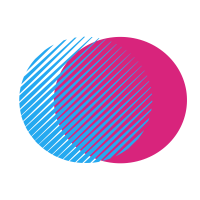Best Software for Creating Clothing Patterns
Creating clothing patterns has never been easier, thanks to a variety of digital tools that cater to everyone from professional fashion designers to DIY enthusiasts. Whether you need precise parametric designs, industrial-grade software, or beginner-friendly options, there’s a tool for every skill level. Additionally, modern software allows for the integration of unique elements like cross-stitch logo patterns, which can add a personalized touch to garments. In this article, we explore the best software options for creating clothing patterns, categorized by open-source solutions, commercial industry standards, and simpler alternatives for beginners.
1. Open Source and Free Software
For those who want powerful tools without the cost, open-source and free software provides excellent solutions. These programs are community-driven and often feature frequent updates and enhancements.
Valentina Project
- Best for: Pattern makers looking for a free yet professional tool.
- Key Features:
- Parametric pattern drafting based on formulas.
- Customizable measurements for better sizing flexibility.
- Open-source and continuously improved by the community.
- Why Choose It? Valentina is a fantastic option for users who need professional-grade features without the expense of commercial software.
Seamly2D
- Best for: Tailors, pattern designers, and small businesses.
- Key Features:
- Based on Valentina but with additional features and long-term development goals.
- Allows users to create parametric, scalable patterns.
- Offers collaboration and pattern-sharing options.
- Why Choose It? If you like Valentina but want additional support and a more active development community, Seamly2D is a great choice.
LibreCAD (for CAD-based pattern-making)
- Best for: Users who prefer a CAD-based approach.
- Key Features:
- Free 2D drafting software for technical designs.
- Useful for those familiar with traditional CAD tools.
- Lacks fashion-specific features but can still be used for pattern making.
- Why Choose It? Ideal for those comfortable with CAD tools who want to create digital patterns with high precision.
2. Commercial Software
If you’re looking for industry-standard tools with professional support, commercial software may be the best option.
Adobe Illustrator (with Fashion Plug-ins)
- Best for: Fashion designers who need a multi-purpose design tool.
- Key Features:
- Vector-based drawing for accurate pattern creation.
- Integration with fashion design plug-ins (such as PatternMaker).
- Industry-standard software for textile and print design.
- Why Choose It? Adobe Illustrator is widely used in fashion design and offers great versatility when combined with specialized plug-ins.
CLO 3D / Marvelous Designer
- Best for: Fashion designers who want realistic 3D visualization.
- Key Features:
- Advanced 3D simulation for pattern testing.
- Ability to adjust patterns dynamically.
- Seamless integration with garment production workflows.
- Why Choose It? If you want to create, test, and modify patterns in a virtual environment before production, CLO 3D and Marvelous Designer are industry leaders.
Optitex
- Best for: Large-scale fashion companies and professional pattern makers.
- Key Features:
- 2D and 3D integration for pattern creation and visualization.
- AI-driven automation for efficiency.
- Used by major fashion brands worldwide.
- Why Choose It? Optitex is a robust tool for enterprises that need precision and integration with manufacturing.
Gerber AccuMark
- Best for: Industrial-level pattern design and grading.
- Key Features:
- Advanced grading and marker-making capabilities.
- Integration with automated cutting and manufacturing.
- Powerful digitization tools.
- Why Choose It? Gerber AccuMark is the go-to software for mass production and large-scale apparel businesses.

3. Simpler Commercial Options
For beginners or those who don’t need complex features, there are simpler commercial options that balance usability and functionality.
PatternMaker
- Best for: Home sewists and small-scale designers.
- Key Features:
- Comes with ready-made pattern templates.
- Easy-to-use interface without a steep learning curve.
- Allows for some customization of measurements.
- Why Choose It? A great option for those who need a straightforward, budget-friendly tool for pattern creation.
Wild Ginger Software (PatternMaster)
- Best for: Small fashion businesses and DIY designers.
- Key Features:
- Modular approach to pattern-making.
- Options for casual wear, professional attire, and activewear.
- User-friendly and designed for non-experts.
- Why Choose It? Wild Ginger’s software provides a simpler alternative to complex CAD-based systems.
Garment Designer
- Best for: Those who want a user-friendly yet functional software.
- Key Features:
- Supports both sewing and knitting patterns.
- Drag-and-drop interface for easy modifications.
- Basic pattern adjustments for various body shapes.
- Why Choose It? If you want a blend of simplicity and power, Garment Designer is a great entry-level tool.
Conclusion
Choosing the best software for creating clothing patterns depends on your needs, experience level, and budget. If you’re looking for a free and flexible solution, Valentina or Seamly2D are excellent choices. For professionals, CLO 3D, Optitex, and Gerber AccuMark offer cutting-edge features, while PatternMaker and Wild Ginger Software cater to those seeking a simple yet effective solution.
No matter which tool you choose, digital pattern-making can help improve accuracy, efficiency, and creativity in your fashion designs.

